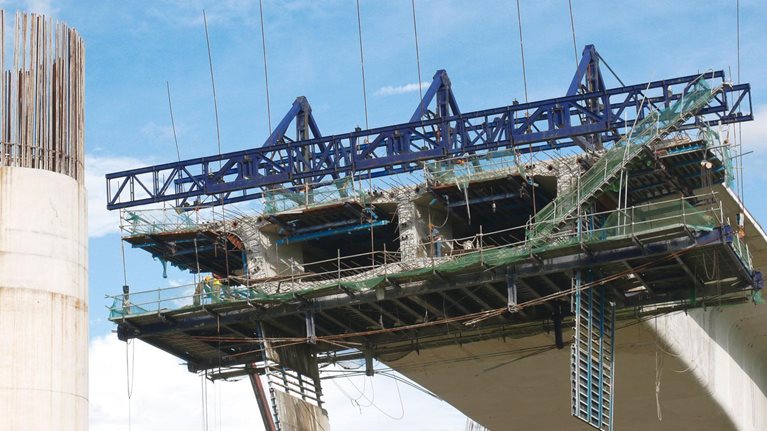The next 15 years are shaping up to be an exceptional period of opportunity for infrastructure finance. According to the McKinsey Global Institute, the world needs to invest almost $50 trillion in infrastructure by 2030 just to keep up with economic growth. The private sector is beginning to step up. Pension plans and insurance companies find infrastructure assets appealing because they provide long-term, inflation-hedged revenue streams. Credit-worthy projects have little difficulty attracting finance from commercial banks.
Stay current on your favorite topics
Moreover, in addition to budget-financed and bond-financed public infrastructure investment, many governments are considering infrastructure banks and funds that can help attract and direct private capital. Australia, Britain, Colombia, Mexico, and Poland have all done so; and others are considering the idea.
Infrastructure banks are not suitable everywhere. We have found that they are most helpful in countries where existing mechanisms, for whatever reason, do not support the creation of a strong pipeline of projects; they can help to direct capital efficiently to the most promising projects. To be effective, any infrastructure bank must ask and answer a series of questions.
What do we want to achieve?
Articulating a clear vision is critical to ensuring that an infrastructure bank fills a need. This mission should be defined in such a way that it does not crowd out existing financing sources; at the same time, it cannot be so different that it fails to find a market. This aspiration can be broader than just financing new projects. It can also include the following:
- mobilizing more private-sector financing
- maximizing socioeconomic outcomes, such as job creation or economic growth
- improving the environment
- assisting cash-strapped subnational governments
- supporting a specific industry, such as energy, transport, or water
- helping to streamline the approval and review process
Would you like to learn more about our Capital Projects & Infrastructure Practice?
For example, the well-established Mexican infrastructure bank Banobras has defined its mission as enabling the creation of infrastructure with high social returns, propelled by the federal government through innovative financing schemes, with a long-term vision that expands the role of the private sector. The founding president of Polish Investments for Development defined his agency’s mission as bringing in “the first, or the last, zloty, alongside the private-sector money, to enable projects that would otherwise not take place.”
If an infrastructure bank has several aspirations in mind, it needs to decide an order of priority. Then it should create metrics, such as the average time needed to reach financial close or the ratio of private to public capital, to assess its progress. Setting targets can be uncomfortable, but doing so is critical to promoting accountability and efficiency, and to selecting the right projects.
What types of projects should we finance?
There are many ways to frame this question. Some infrastructure banks will only finance projects in which there is “additionality”—meaning that the project would likely not have happened without their support. Others focus on impact, requiring that projects meet explicit standards, such as creating a certain number of jobs or building a specified number of miles of roads or gigawatts of power. Two other options are to prioritize projects based on risk-adjusted returns, to avoid the perception of “picking winners,” and to use a portfolio approach, mixing high-risk, high-reward projects with less exciting ones.
The principle to keep in mind is that the bank’s aspiration should provide the framework to choose what projects to select. For example, if the highest priority is to improve access to infrastructure for low-income households, then a water, energy, or transport project in a poor community might get priority over a highway interchange in a wealthier one.
How can we help to improve the project pipeline?
Infrastructure banks can help to create investment-worthy projects in several different ways:
- setting bankability standards, so that sponsors know what would-be investors need
- providing technical assistance, such as advice on risk allocation, construction-cost management, and user tariffs
- offering competitive project-development grants
- working with governments to create a list of worthwhile projects
- allocating below-market cost equity to improve the risk-adjusted returns of a project
Finally, an infrastructure bank can become a partner at the table on the highest-priority projects.
What financial products should we offer?
Many infrastructure banks start with senior debt for risk reasons, but they may be able to achieve higher impact and additionality with subordinated debt, guarantee, mezzanine, construction, and even equity or subordinated-equity finance. These products de-risk the senior debt that private-sector infrastructure investors contribute and so play an important role in keeping the money flowing.
How can we ensure that we operate efficiently?
Sad but true: even if a bank chooses the right projects and provides the right products, it can still fail if its operations fall short. Avoiding the traps of bureaucratization and inefficiency starts with governance. Specifically, the bank should consider having a majority of the board from outside the government to create a degree of independence. Decision making should be delegated to credit and investment committees that meet regularly to review short, simple presentations. These committees should discourage “shadow” approval processes in which investment and credit officers have to make the rounds of committee members to campaign for their support.
Finally, infrastructure bank staff should adopt lean principles, such as the following:
- requiring less documentation for smaller, less risky, or simpler projects setting bankability standards, so that sponsors know what would-be investors need
- working in cross-functional teams oriented around projects in the same sector or geography
- ensuring accountability at every stage by clarifying who is responsible, who approves, who supports, and who is consulted on any decision
- building a culture of continuous improvement
How far does our responsibility go?
The short answer is that it never really ends. The work of an infrastructure bank is not finished once it approves an investment. In addition to keeping an eye on compliance and repayment, a bank can help to ensure that projects stay on time and on budget. Specifically, it can work to cut the time between investment approval and closing and help to connect clients to other sources of financing. An infrastructure bank can act as an honest broker between project sponsors and regulatory agencies and provide technical assistance and training in design and construction procurement and management.
Finally, it can take a page from high-performing private-equity firms, which can spend as much time improving the performance of portfolio assets as they do sourcing new deals.

Making a better match: Institutional investors and infrastructure
All this is far easier said than done, but establishing an infrastructure bank may still be a good option. The best of them are neither cash machines nor government charities but true strategic investors.


